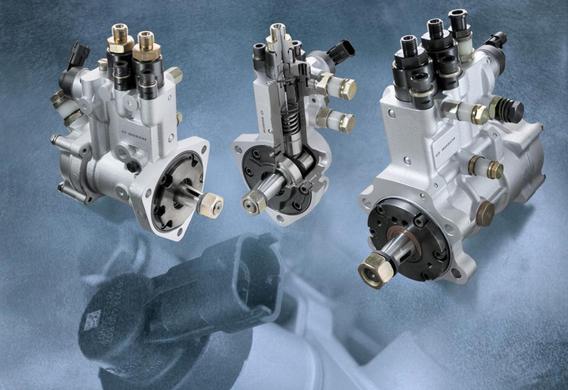
The high pressure fuel pump (TDP) is an important and complex fuel supply system. Its complexity is the result of the large number of functions it has to perform. Initially, the TDP was used on diesel engines, and later, with the introduction of direct injection systems, the fuel system of petrol powertrains was introduced. In either case, the DHBs are either for high-pressure fuel supply or for high pressure in the fuel system or battery. Type of injection system
Type of injection system
DHBs, depending on the design of the injection system, are divided into direct action fuel pumps and the battery injection. The direct action fuel pump for each injector has its own separate Pump-type pump, as the fuel is injected into the pump and injected at the same time. In other words, a separate section of the fuel pump shall submit the required portion of the fuel in each cylinder. The fuel pump with the pump injection is driven by the pressure of compressed gas in the engine cylinder (although there is a design with a conventional spring pump). On systems equipped with hydraulic accumulators, the fuel is first injected into the battery, where constant high pressure is maintained. From the hydroaccumulator, the fuel is pressurized to the nozzle. Such a system contributes to a better and more equitable dispersion of the fuel, and therefore the mixture burns more evenly over the wide range of loads. DHBs, by design, may be multisectional, V-shaped and distributive. Average DHBs are located each other. In the DHBs, a pump section is responsible for supplying the fuel straight to the engine in several cylinders. Depending on the number of cylinders, as a rule, a distribution unit consists of one or two sections.
Principle of operations of TNT
The TDP is carried out from the crankshaft to resembling the EMG belt. Inside the TDP is a cam shaft. When the wail is rotated, the shaft of one of the valves shall be compressed in turn, and the plunger shall be lifted in turn. The pump chamber at this point is the fuel which the plunger will displace. The propellant valve, which is opened by the pressure, comes to the nozzle. Then the spring returns to the place, and the volume of the pump is filled with the fuel, which serves the fuel pump from the low pressure fuel pump (TNPA).
Since the mechanical TEDP serves both fuel and injection, it is possible to measure the desired amount of fuel and to supply it to the nozzle at the right moment. The amount of fuel used for injection is controlled by the rotation of the plunger ring (or other setting, depending on the type and generation of the TDDP), and the fuel supply at the right time is a function similar to the injection timing of the petrol engine. An adjustable parameter is called the injection timing angle.
Benefits and shortcomings of TNT
It is difficult to talk about the merits of the TDDP, since it is unique in its kind of knot, and compare it only with another similar engineering solution. Disadvantages are several, and all of them are the consequence of the complexity of the pump device. A lot of precision parts are used in the design of the site which require careful maintenance and are also lubricated by the fuel pump. For this reason, the life of the DDP depends on the quality and purity of the fuel. Any extraneous abrasive impurities and water significantly increase wear. For this reason, it is necessary to correct the vehicle in which the engine is installed with the TDDP, only in the tested locations, where the fuel is of the same high quality.







